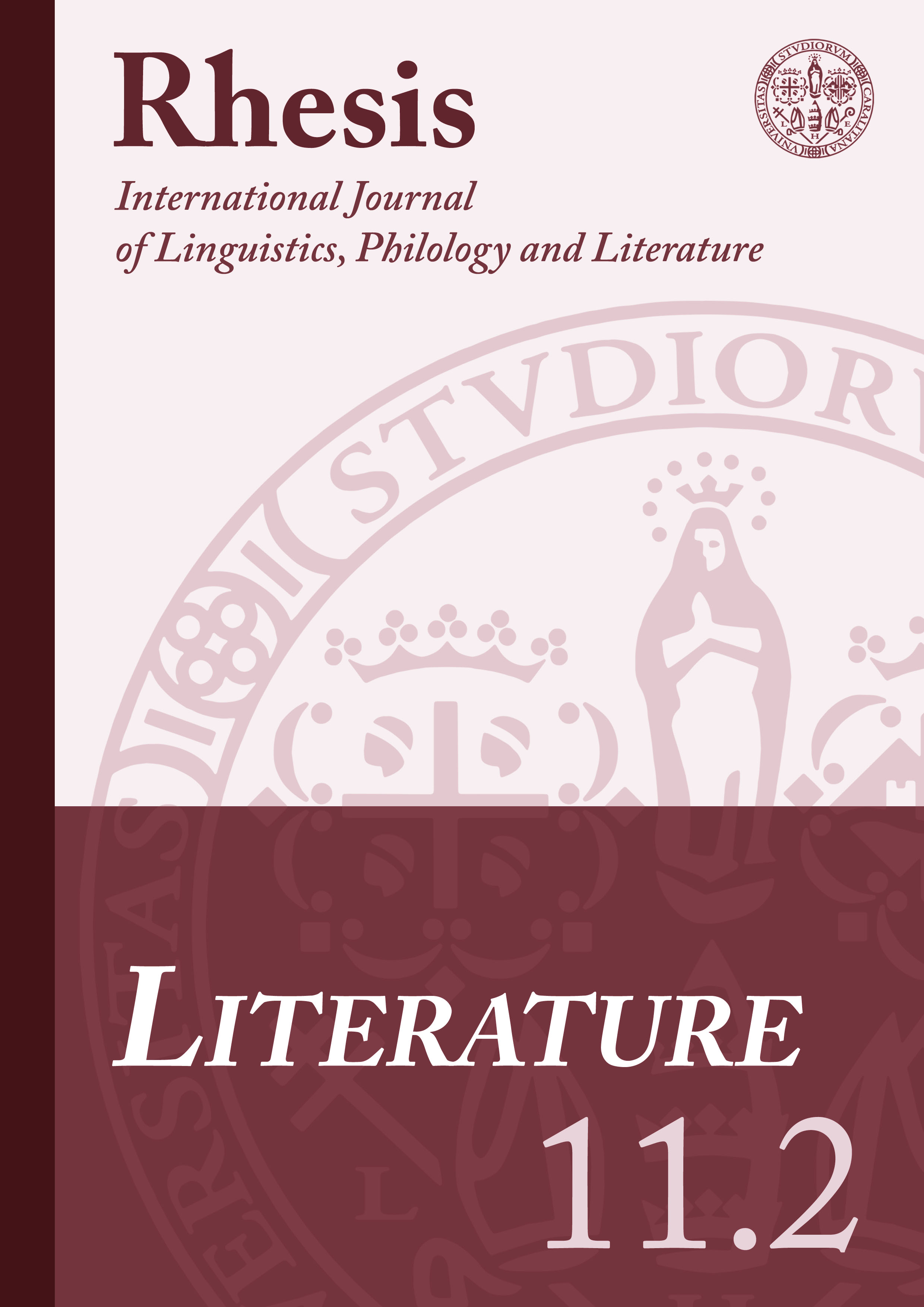«I know I’m fatter»: hunger and bodily awareness in Frances Hodgson Burnett’s The Secret Garden
Abstract
This article analyses the connection between food, hunger, and child health in Frances Hodgson Burnett’s 1911 children’s novel The Secret Garden. It combines food in children’s literature theory, medical history, and body studies, and specifically it draws from Pasi Falk’s concept of corporeality, which conceives the human body as a sensual and sensorial entity (1994). Within this theoretical framework, the article reads The Secret Garden as the account of the two child protagonists’ corporealization, that is, their transition from incorporeality (which coincides with lack of hunger, disconnection from one’s own body, and illness), to corporeality (which coincides with hunger, awareness of one’s physicality, and health). Tracing the two children’s progress from illness/incorporeality to health/corporeality, the article contributes to position the novel within the Victorian and Edwardian medical discourse about child nutrition and healthy child physicality; in this analysis food emerges as a key-element to both the corporealization process in the story, as a sensorial stimulant, and to the novel’s engagement with debates about child nutrition and health in its cultural and historical context.
Downloads
References
Bakshi-Hamm, Parminder (2012), ‘Racialised Boundaries. Frances Hodgson Burnett’s The Secret Garden and Alice Walker’s “In Search of Our Mothers’ Gardens”’, Gender Forum 38.
Barker, Samuel (1865), The Domestic Management of Infants and Children in Health and Sickness, London, Robert Hardwicke.
Boehm, Katharina (2013), Charles Dickens and the Science of Childhood - Popular Medicine, Child Health and Victorian Culture, Basingstoke, Palgrave Macmillan.
Cadogan, William (1748), An Essay Upon Nursing, and the Management of Children, from Their Birth to Three Years of Age, London, J. Roberts.
Carpenter, Angelica Shirley; Shirley, Jean (1990), Frances Hodgson Burnett - Beyond the Secret Garden, Minneapolis, Lerner Publications Company.
Chavasse, Pye Henry (1868), Advice to a Mother on the Management of Her Children, London, Churchill.
Combe, Andrew (1860), The Management of Infancy Phisiological and Moral Intended Chiefly for the Use of Parents, Edinburgh, Maclachlan and Stewart.
Daniel, Carolyn (2006), Voracious Children - Who Eats Whom in Children’s Literature, New York, Routledge.
Darcy, Jane (1995), ‘The Representation of Nature in The Wind in the Willows and The Secret Garden’, The Lion and the Unicorn 19 (2), 211-222.
Dolan, Frances E. (2013), ‘Mastery at Misselthwaite Manor: Taming the Shrews in The Secret Garden’, Children’s Literature 41 (1), 204-224.
Dukes, Clement (1899), The Essentials of School Diet, or, The Diet Suitable for the Growth and Development of Youth, London, Rivingtons.
Falk, Pasi (1994), The Consuming Body (Published in Association with Theory, Culture & Society), London, Sage Publications.
Goodwin, Mary (2011), ‘The Garden and the Jungle: Burnett, Kipling and the Nature of Imperial Childhood’, Children’s Literature in Education 42 (2), 105-117.
Hodgson Burnett, Frances (2019) [1911], The Secret Garden, London, Penguin Random House.
Hogan, Louise E. (1902), Children’s Diet in Home and School, Philadelphia, Henry T. Coates & Co.
Hogg, Charles (1849), On the Management of Infancy: With Remarks on the Influence of Diet and Regimen, London, Churchill.
Hunt, Peter (1991), Criticism, Theory, and Children’s Literature, Oxford UK and Cambridge USA, Blackwell.
Keeling, Kara K.; Pollard, Scott T. (eds.) (2009), Critical Approaches to Food in Children’s Literature, New York and London, Routledge.
Lennox Keyser, Elizabeth (1983), ‘“Quite Contrary”: Frances Hodgson Burnett’s The Secret Garden’, Children’s Literature 11, 1-13.
Montanari, Massimo (2006), Food is Culture, New York, Columbia University Press.
Moruzi, Kristine (2012), Constructing Girlhood Through the Periodical Press, 1850-1915, Farnham, Ashgate.
OED online = Oxford English Dictionary online, “Jaundice, n. Def. 1a”
Pereira, John (1843), Treatise on Food and Diet, London, Longman, Brown, Green and Longmans.
Pharmacopoeia of the Hospital for Sick Children - Great Ormond Street (1891) London.
Phillips, Jerry (1993), ‘The Mem Sahib, the Worthy, the Rajah and His Minions: Some Reflections on the Class Politics of The Secret Garden’, The Lion and the Unicorn 17 (2), 168-194.
Price, Danielle E. (2001), ‘Cultivating Mary: The Victorian Secret Garden’, Children’s Literature Association Quarterly 26 (1), 4-14.
Shahani, Gitanjali G. (2018), Food and Literature, Cambridge, Cambridge University Press.
Silver, Anna Krugovoy (1997), ‘Domesticating Bronte’s Moors: Motherhood in The Secret Garden’, The Lion and the Unicorn 21 (2), 193-203.
Spencer, Herbert (1861), Education: Intellectual, Moral, and Physical, London, Williams and Norgate.
Stables, Gordon (‘Medicus’) (1880), ‘How Can I Look My Best?’, The Girl’s Own Paper 1, 180-181.
Stiles, Anne (2015), ‘Christian Science versus the Rest Cure in Frances Hodgson Burnett’s The Secret Garden’, MFS - Modern Fiction Studies 61 (2), 295-319.
Tosi, Laura; Hunt, Peter (2018), The Fabulous Journeys of Alice and Pinocchio – Exploring Their Parallel Worlds, Jefferson, McFarland & Company.
Valint, Alexandra (2016), ‘“Wheel Me Over There!”: Disability and Colin’s Wheelchair in The Secret Garden’, Children’s Literature Association Quarterly 41 (3), 263-280.
Wilkie, Christine (1997), ‘Digging up the Secret Garden: Noble Innocents or Little Savages?’, Children’s Literature in Education 28 (2), 73-83.



